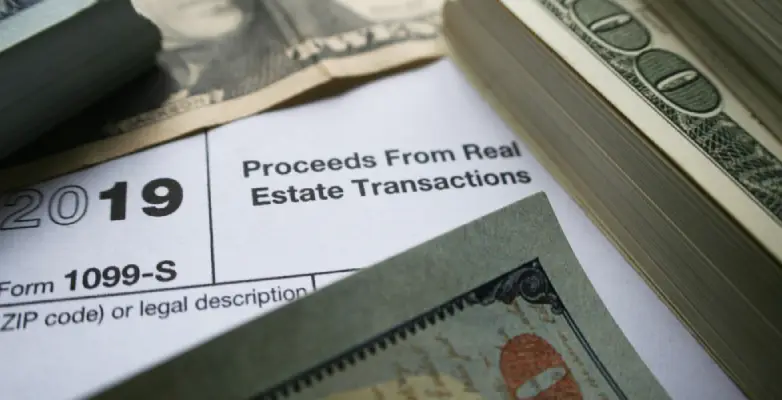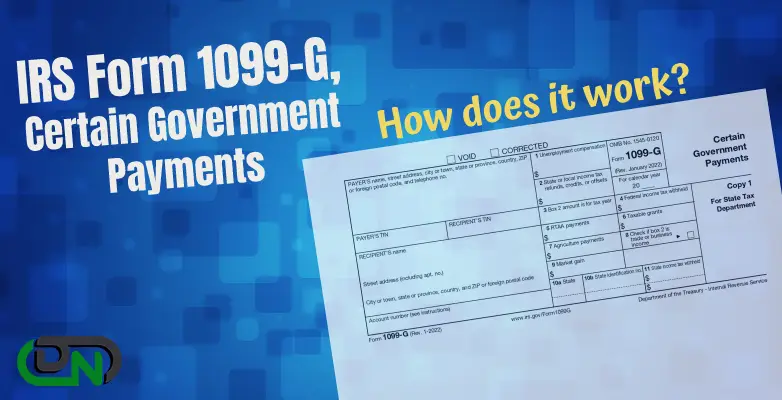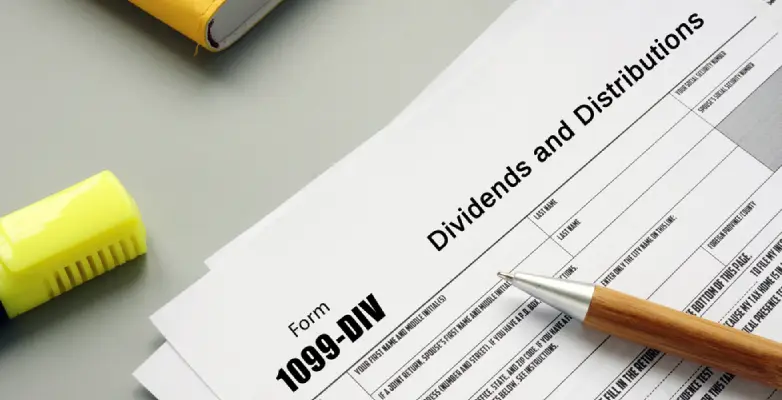The IRS Form 1099-S, Proceeds from the Real Estate Transactions, it is the particular form that must be submitted in order to report a sale or exchange. The buyers must complete and submit their Form 1099-S for the sale of real estate. The completion and inclusion of a 1099-S in the closing papers is something that buyers might request.
In case, if you do not satisfy the standards of IRS for removing the taxable gain from the sale on your income tax return, federal tax law mandates that lenders or real estate agents to file a Form 1099-S then you have to Proceeds from Real Estate Transactions, with the IRS and send you a copy. Even if you are eligible for the taxable gain exception, the lender or the agent may nonetheless send you a 1099-S in order to comply with IRS reporting requirements. Second box of the form contains the gross profits from the sale of your house.
Table of Content
- 1 What is a Tax Form 1099-S
- 2 Which Transactions are not Reported in Form 1099
- 3 Step by Step Component of Form 1099-S
- 4 Who File the Form 1099-s for the Sale of Real Estate
- 5 Reporting of Form 1099-S for Tax Return
- 6 Use of IRS Form 1099-S
- 7 Legal Consideration
- 8 Form 1099-S (Selling of Real Estate Property)
- 9 Frequently Asked Questions
What is a Tax Form 1099-S
The Real estate transaction proceeds are reported on IRS Form 1099-S for the purpose of tax reporting. Anytime you transact in real estate throughout the year of tax, you must use it. This can include undeveloped property, enduring buildings, residences like condos, and much more. Any time real estate is exchanged, whether it is through a sale or an exchange, the form must be used.
A lot of information is needed because this is a tax form for the Internal Revenue Service. The Personal information about the filer such as their full name and address must be provided. Along with the gross revenues from the real estate transaction, the address of the property in issue must also be provided. The 1099-S form needs to be delivered along with the tax records for the rest of the years.
Following are the items among those which usually recorded transactions on the form and it include sales of:
- The land which is improved or unimproved
- Buildings like residential, commercial and industrial are the permanent structures.
- Ownership of cooperative housing corporation stock.
- Standing timber has a non-contingent interest.
- A condominium unit, along with any fixtures and communal areas, such as a piece of land
If you are married and your gain from the sale is $500,000 or less then the IRS offers an exemption from the Form 1099-S reporting the requirement for the sale of your primary residence. Gains of $250,000 or less are exempted if you are single. If you are married couple then there is no requirement to pay the capital gains tax on the first $500,000 in proceeds on the sale of their primary house ($250,000 for individuals), making those figures important.
Only if you certify in writing that the property which was sold is your primary residence then it will be excused from filing a Form 1099-S for sales of real estate. Even if the exemption is valid, the Form 1099-S still is to be sent out, otherwise it is not necessary. And finally, if you obtain less than $600 from the sale of real estate, then there is no need of reporting.
Which Transactions are not Reported in Form 1099
If you exchange or sell an interest in any of the following types of property, as long as it is unrelated to a reportable sale then there is no requirement of submitting a Form 1099-S.
- The manufactured building which are being utilized as a home if it was assembled in the location where it is not used. In certain cases only it does apply, where the building was freestanding that is not attached to the foundation at the time when it was sold.
- A desire for natural resources, such as water or gas that are found on the surface or below the ground.
- Regardless for the one who are attached to the land but they are not served from the land, like crops.
- The property or land which is used for the grave or vault for the dead.
Step by Step Component of Form 1099-S
Form 1099-S includes details on the filer, the transferor, the closing date, the proceeds, and the specifics of the asset which are being transferred.
The step by step components which are used to complete the Form 1099-S are:
- First, You have to enter the name, detail address, and a phone number of the Transferor’s.
- Taxpayer’s social security number or tax identification number,
- TIN/SSN of the transferor.
- Address and Name of Transferor.
- Number of the Customer.
- The closure date.
- Gross earnings.
- The location of the transferred property or its legal name.
- Indicate whether the transferor received any goods or services in exchange for the transfer.
- A statement stating if the transferor is a foreign person, partnership, estate, or trust.
- The Tax Paid by the Real Estate Buyer.
Cash that the seller has already received or will receive is included in the transaction’s gross proceeds. The value of any goods or services that the seller has received, such as separate cash payments for personal items like a washer and dryer that was included in the sale but it is not included in the gross proceeds.
Use a Tax Form W-9 to submit a TIN request to IRS.gov if you don’t already have one.
Who File the Form 1099-s for the Sale of Real Estate
The IRS states that the individual in charge of concluding the deal is the one who must submit the Form 1099-S reporting for the sale. As a result, whether you engaged a title of firm or lawyer to close your purchase, they are often in charge of filling out and submitting the form on your behalf.
You are in charge of submitting a Form 1099-S to record the transaction if you close it yourself. The seller is required to declare the sale’s proceeds to tax authorities, according to a condition that is included in the majority of real estate purchase agreements. Additionally, you can appoint someone in writing to submit the Form 1090-S.
Specific types of paper and ink are required for printing of the Forms 1099-S. No one can stop you for getting the right paper and ink in order to print the form; it is typically simpler to purchase copies of the paperwork from the IRS. You will receive the free forms in the mail.
Reporting of Form 1099-S for Tax Return
Depending on whether the transaction is to be considered taxable income, then the information from the Form 1099-S is reported differently. On your Form 1040, U.S. Individual Income Tax Return utilize the listed schedules and forms, the sale of real estate held for any of the following reasons is reported:
- Primary residence: Form 8949 is to be reported for Sales and Other Dispositions of Capital Assets and Schedule D for Capital Gains and Losses.
- Schedule D and Form 8949 are used to describe vacation properties or timeshares.
- Schedule D and Form 8949 refer to inherited property.
- Schedule D for the investment of property.
- Rental or business real estate: Schedule D and Form 4797, Sales of Business Real Estate.
- Form 8824, Like-Kind of Exchanges, is used for real estate.
The IRS receives copies of your Forms 1099 and will use them to confirm that you have disclosed the transaction on your return even though you are not obliged to include them with your income tax returns.
Use of IRS Form 1099-S
It is necessary to report real estate transaction which proceeds using IRS Form 1099-S, Proceeds from Real Estate Transactions. The use of the property determines where this information is reported or not. Property is used for personal use, investment use, Business use or Rental Use, all are explained below in detail:
Personal Use:
Check the appropriate box on your Form 1099-S if the sale of your primary residence is the reason you received the 1099-S. Schedule D and Form 8949 will both include information about the sale of your home. If your gain does not exceed your exclusion amount, you do not need to disclose the sale of your primary residence.
If the 1099-S is related to the sale of your primary residence, then you have to complete the program’s Sale of Home questions under the Investment Income topic which help you in determining whether any proceeds are taxed or not. You can find further details in the IRS Instructions for Form 1099-S.
- First, You have to click on the Federal tab of your Tax Act return (desktop or online). On the upper-left corner of the screen and choose and click on Federal.
- Now, You have to click on investment home in federal Quick Q&A. Now, from the drop down menu of federal Quick Q&A, Select category option.
- By clicking on category, List of options open- select Gain or Loss on the sale of investment option.
- Now, You have to select Sale of your primary residence.
- As you enter or review the necessary information, the program will move on to the interview questions.
The transaction will be transferred to the appropriate forms/schedules in your return if you check the box indicating that you received a Form 1099-S.
Your primary residence is for personal use property, so if you lost money when you sold it, you cannot deduct that loss. The house sale transaction will be recorded on Form 8949 and Schedule D if the checkbox on a Form 1099-S was checked. Using Adjustment Code L, the Tax Act application will automatically set the loss to zero.
According to IRS Schedule D regulations if your gain does not exceed your exclusion amount then there is no need to record the sale of your primary residence on your tax return. For details on the ownership and usage tests, the exclusion amount, and the sale of your house consults IRS Publication 523 Selling Your Home.
It is required to disclose the sale on Federal Form 8949 and Schedule D if the 1099-S was for a timeshare or vacation home as those items are regarded to be personal capital assets for you. This sale resulted in a gain, which must be reported. Being that it was property for personal use, if you suffered a loss on the sale, you cannot deduct this loss. If an inheritance is a capital asset then the same rules apply as they do for gifts of property. For the loss to be permitted on the return, you would need to pick Adjustment Code L.
Reporting proceeds for items regarded as personal capital assets
- Navigate to the tab Tax Act return (Online or Desktop); Now, Select Federal by clicking in the upper-left corner of mobile devices.
- Gain or loss on sale of investments can be accessed by expanding the category and selecting Investment Income from the Federal Quick Q&A Topics menu.
- In the Federal Quick Q&A Topics menu, select Capital Gain or Loss options are there (Form 1099-B).
- To make a new copy of the form, click New Copy of Form 1099-B (Desktop users click Add), or click review once you complete the form for accuracy.
- The interview questions will be asked as the program moves forward so that you can enter or review the relevant information.
Investment Use:
If the 1099-S was for investment property (or, as previously indicated, inherited property that is regarded as investment property), the sale would need to be reported on federal Schedule D:
- Click Federal in your Tax Act return (either online or on a desktop). On smaller screens, click in the upper-left corner and choose Federal.
- To extend the category, select Gain or loss on sale of investments by clicking Investment Income in the Federal Quick Q&A Topics menu.
- Simply select Capital Gain or Loss (Form 1099-B).
- To generate a new copy of the form, select New Copy of Form 1099-B (Desktop users select Add), or to examine an existing form, select Review and check the relevant information.
- As you enter or review the necessary information, the program will move on to the interview questions.
Business or Rental Use:
The IRS Form 4797 and Schedule D must be filled out if the 1099-S was for the sale of a business or rental property.
- Click Federal in your TaxAct return (either online or on a desktop). On smaller screens, click in the upper-left corner and choose Federal.
- Depending on the type of business that owned the asset, expand the category by clicking Business income in the Federal Quick Q&A Topics menu, and then choose Business income or loss from a sole proprietorship or Rent and Royalty Income.
- As you enter or review the necessary information, the program will move on to the interview questions.
Legal Consideration
In case of Buyer
In your purchase agreement, if you are the buyer, you can specify that the seller is in charge of any IRS reporting that is necessary due to the seller’s receipt of cash associated with the transaction. A 1099-S will be completed using the information on IRS Form W-9, which you can request the seller to complete as part of their closing package. In the event that a W-9 is not obtained or a designation clause is not included in the purchase agreement, then you can prepare a letter of instructions and send it to the seller along with all the necessary paperwork for them to fill out and submit to the IRS.
In case of Seller
If you are a seller, you should file your own 1099-S since you have all the information required to do so. A closing might occasionally be handled by the title firm, Escrow Company, or closing attorney who will be in charge of filing the 1099-S. additionally, a seller must fill out a 1096 transmittal form with all of your information.
Form 1099-S (Selling of Real Estate Property)
Selling of Main Home
- Navigate to Tax Act return’s Online or Desktop window and then click on Federal.
- Now, Select Gain or loss on the sale of investments from the Investment Income dropdown menu and then select Sale of your primary residence.
- In order to enter your details you have to carry on with the interview procedure.
Selling of Investment Property
- Navigate to the top left corner of your screen and select tax act return and then select Federal from the list of option.
- From the Investment Income drop-down menu, you have to select Capital Gain or Loss and from the drop-down menu of Gain or Loss (Form 1099-B) you have to select Sale of Investments form.
- To make a new duplicate of the Form 1099-B, you have to click + add, and then make changes to an existing form.
- Continually enter your information while the interview goes on.
Selling of Business Property
- Navigate to the Tax return and then select federal.
- Select Business Income and from the drop down menu of business income, you have to select Business income or loss from a sole proprietorship.
- Now, go through the process of interview.
- Now, navigate to the titled business income, select MACRS option.
- Then, hit OK button and continue with the process of interview.
Selling of Rental Property
- Navigate to the Tax return and then select federal.
- Now, Select Rent and then from the list of option, you have to select Real Estate Rental Income.
- In order to create new copy, you have to select +add button and if you want to edit something, you have to select edit button.
- Now, You have to continue with the process of interview until Rental Income Depreciation tab occur.
- Now, Hit the yes button for next page and select MACRS Deprecation-Asset option.
- Lastly, Follow the steps as shown on the screen in order to complete the interview process.
Frequently Asked Questions
What are the Reminders of the IRS for Form 1099-s?
Following are the reminders of IRS for Form 1099-S:
• Who must submit
• Date and location for filing
• Digital reporting
• Void returns and corrected returns.
• Beneficiaries statements.
• Identification codes for taxpayers (TINs).
• Withholding backup.
• Penalties.
• Other broad subjects
What are Multiple Transferors?
You must submit an individual Form 1099-S for every transferor of the same real estate, if there are numerous transferors. A division of the gross proceeds among the transferors is something you must ask from them. It is not necessary for the request and the reply to be in writing. You are required to make an effort to get in touch with every transferor you are aware of. There are two types of Multiple Transferors:
• Spouse: If the transferors were married at the time of the closing and owned the property as joint tenants, tenants by the entirety, tenants in common, or as community property, treat them as a single transferor. There is only one Form 1099-S needed to list either of them as the transferor. If the only transferors are your spouses, you do not need to ask for an allocation of the gross revenues. However, if they provide you an uncontested division of gross proceeds, you must submit Form 1099-S for each spouse in accordance with the distribution. You must attempt to reach either spouse if there are more transferors in order to ask for an allocation.
• Partnership: If a partnership is transferring the property, the partnership as a whole, Not each partner individually, Should be listed on a single Form 1099-S.
What do You Understand by TINs?
The transferor’s TIN must be requested no later than the close. No separate mailing is necessary to submit the TIN request. Instead, it could be sent in person, as part of a larger mailing, or electronically. The transferor must provide their TIN in its whole, unaltered, and attest that it is accurate. You can ask for a TIN for U.S. citizens (including U.S. permanent aliens) on Form W-9, Request for Taxpayer Identification Number and Certification. On the appropriate Form W-8, foreigners may give you their TIN. Consult the most recent General Instructions for Certain Information Returns, section J.




